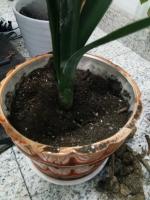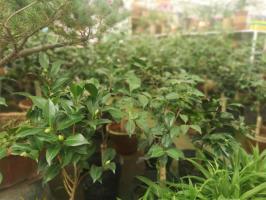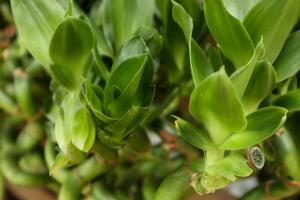Are There Wild Tomato Plants?
Tomatoes are a staple in many cuisines around the world. They are an important source of nutrients and have a unique taste that makes them a popular ingredient in many dishes. But while most people are familiar with the domesticated tomato plant, many may be surprised to learn that there are wild tomato plants as well. In this article, we'll explore the existence of wild tomato plants and their significance in the world of botany and agriculture.
The Origin of Tomatoes
The tomato is native to South America, specifically the Andes Mountains that span Chile, Peru, Ecuador, and Colombia. The earliest cultivated tomato plants can be traced back to the region that is now modern-day Mexico. It is believed that the ancient Aztecs were the first to cultivate and consume tomatoes. When the Spanish conquistadors arrived in the Americas, they brought the tomato back to Europe with them, where it quickly gained popularity.
Wild Tomato Plants
While most tomatoes eaten today are the result of domestication, there are still wild tomato plants that exist in South America. These plants grow in a variety of habitats, including forests, grasslands, and even deserts. Wild tomato plants are different from their domesticated counterparts in a number of ways. For example, they often have smaller fruits, and they may have a more robust flavor.
The Importance of Wild Tomato Plants
Wild tomato plants are important for a number of reasons. For one, they are a source of genetic diversity that can be used to improve the cultivated tomato. Many of the traits found in wild tomato plants, such as disease resistance, drought tolerance, and higher levels of nutrients, are desirable in cultivated tomatoes. Additionally, wild tomato plants are important in their own right. They play a key role in their respective ecosystems by providing food for wildlife, and they also help maintain biodiversity.
Conservation Efforts
Due to a variety of factors, including habitat destruction, overgrazing, and climate change, many wild tomato species are currently threatened or endangered. As a result, there are efforts underway to conserve these plants. These efforts include seed banking, ex situ conservation, and in situ conservation. Seed banking involves the storage of seeds from wild tomato plants in specialized facilities, where they can be kept for long periods of time. Ex situ conservation involves the cultivation of wild tomato plants in controlled environments, such as botanical gardens and greenhouses. In situ conservation involves the protection and management of wild tomato populations in their natural habitats.
Conclusion
Wild tomato plants are an important part of the natural world, and they have significant value in the world of agriculture as well. Their diversity and unique traits make them a valuable resource for improving cultivated tomatoes, and their conservation is important for maintaining biodiversity and preserving plant genetic resources. While many wild tomato species are currently at risk, there are efforts underway to conserve them and ensure that they continue to play an important role in ecosystems around the world.

 how many times do yo...
how many times do yo... how many planted tre...
how many planted tre... how many pine trees ...
how many pine trees ... how many pecan trees...
how many pecan trees... how many plants comp...
how many plants comp... how many plants can ...
how many plants can ... how many plants and ...
how many plants and ... how many pepper plan...
how many pepper plan...
































